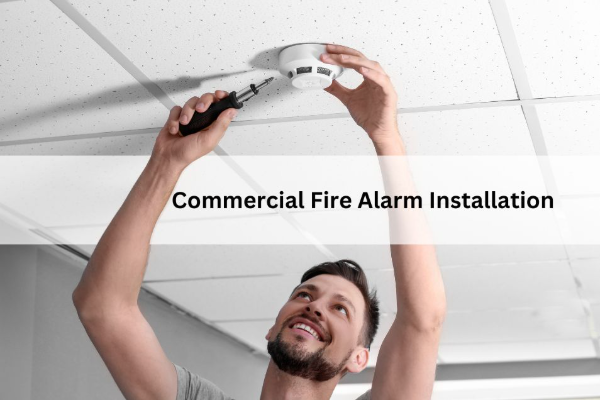In the United States, fire safety remains a critical concern for business owners, with commercial fire losses exceeding $3 billion annually. Implementing the right fire alarm system is not just about compliance—it's a key measure to protect lives, assets, and ensure the safety of employees and customers. This comprehensive guide provides everything you need to know about commercial fire alarm systems in the U.S.

Understanding NFPA Requirements
The National Fire Protection Association (NFPA) sets strict standards for commercial fire alarm systems in the U.S. Key requirements include
- Regular system inspections and testing
- Documentation of all maintenance activities
- Specific placement of detection devices
- Backup power systems
- Emergency communication systems
Essential Components of Commercial Fire Alarm Systems
Detection Devices
- Smoke detectors (photoelectric and ionization)
- Heat detectors
- Carbon monoxide detectors
- Multi-criteria detectors
- Beam detectors for large spaces
Notification Appliances
- Audible alarms (horns and bells)
- Visual alarms (strobes)
- Voice evacuation systems
- Mass notification systems
Control Panels
- Fire Alarm Control Units (FACU)
- Remote annunciators
- Monitoring stations
- Integration capabilities
Smart Fire Detection Technology
Modern commercial fire alarm systems now incorporate advanced features for enhanced safety and convenience
- Cloud-based monitoring and control for real-time oversight
- Mobile app integration allowing for easy remote access
- AI-powered early warning systems for quicker response times
- Integration with building automation systems
- Remote diagnostics and troubleshooting to quickly identify issues
Cost Considerations
Investing in a commercial fire alarm system typically involves the following costs
- Initial equipment costs ($5,000 - $50,000+ depending on the system)
- Installation fees (varies by complexity and location)
- Monthly monitoring fees ($50 - $200)
- Annual maintenance and inspection costs
- Testing expenses for system reliability
Compliance and Insurance Benefits
Proper fire alarm system installation can
- Meet local building codes
- Reduce insurance premiums
- Minimize liability risks
- Satisfy occupancy requirements
- Demonstrate due diligence
Choosing the Right System
Consider these factors when selecting a system
- Building size and layout
- Occupancy type and count
- Local code requirements
- Budget constraints
- Future expansion needs
Maintenance and Testing Requirements
Regular maintenance is vital for system reliability and involves
- Weekly visual inspections to ensure functionality
- Monthly battery testing to ensure uninterrupted power supply
- Quarterly device testing to ensure detection accuracy
- Annual comprehensive inspections for system performance
- Documentation of all activities for compliance tracking
Emergency Planning and Training
Effective implementation requires
- Staff training programs
- Emergency evacuation plans
- Regular fire drills
- Clear communication protocols
- Updated emergency contact lists
Common Challenges and Solutions
False Alarms
- Implement multi-criteria detection to reduce the likelihood of false alarms
- Regular cleaning and maintenance of detectors to ensure accuracy
- Professional system programming to avoid improper configurations
- Staff training on prevention and awareness of alarm triggers
System Integration
- Use compatible components for seamless integration
- Opt for professional installation to ensure proper system setup
- Keep the system updated with regular software updates
- Ensure proper documentation for future troubleshooting and repairsn
Future Trends
The U.S. commercial fire alarm industry is evolving with the following innovations
- IoT integration for smarter building management
- Use of Artificial Intelligence (AI) for predictive maintenance and smarter fire detection
- Implementation of predictive maintenance to identify system weaknesses before failure
- Enhanced communication systems for more efficient emergency response
- Compatibility with green buildings for energy efficiency and sustainabilit
Conclusion
Investing in a commercial fire alarm system is not just a legal requirement—it's an essential measure to protect your business, employees, and customers. Understanding the system's components, maintenance needs, and emerging technologies enables businesses to make informed decisions about their fire safety infrastructure.
Remember, fire safety is an ongoing commitment requiring regular updates, maintenance, and training to ensure the optimal protection of your commercial property. By staying ahead of the curve, businesses can minimize risks and ensure the safety and security of their assets.
